VRaySkinMtl
This page provides information on the V-Ray Skin Material.
Overview
VRaySkinMtl is a material specifically designed for rendering skin. In comparison to the VRayFastSSS2 material, which can also be used for the same purpose, the goal of the VRaySkinMtl material is to provide artists with greater control and to simplify the setup of the material.
The material is composed of several different layers which are added together: a diffuse layer, three sub-surface scattering layers, and two reflection layers. The contribution of each layer relative to the other layers is controlled by an "amount" value. Additionally, the sub-surface layers are grouped so that their total contribution can be clamped. The same is implemented for the two reflection layers.

©
Frederik Rieckher
Although the VRaySkinMtl is no longer exposed in the UI of the Material Editor it is still supported and will be rendered in Raytraced mode in scenes that contain it. We recommend using VRayFastSSS2 or VRayALSurfaceMtl for skin shading.
General Parameters
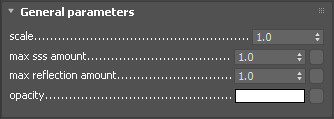
scale – Allows the user to quickly scale the sub-surface scattering effect up or down. This is a multiplier for the individual shallow, medium, and deep radius values.
max sss amount – Limits the total contribution of the sub-surface scattering layers to the specified value. If the sum of the individual shallow, medium, and deep scattering layers exceeds the Max sss amount value, the amounts are renormalized so that their sum is the same as the Max sss amount.
max reflection amount – Limits the total contribution of the reflection layers to the specified value. If the sum of the Primary reflection amount and the Secondary reflection amount exceeds this value, the amounts are renormalized so that their sum is the same as Max reflection amount.
opacity – controls the transparency of the material. Higher values are more opaque, and darker values are more transparent.
Diffuse Rollout

diffuse color – Specifies the color for the diffuse layer.
diffuse amount – Specifies the relative contribution of the diffuse layer to the material.
Shallow Scattering Rollout

shallow color – Specifies the color for the shallow scattering layer.
shallow amount – Specifies the relative contribution of the shallow scattering layer to the material.
shallow radius – Specifies the distance that light is scattered within the shallow layer.
Medium Scattering Rollout

medium color – Specifies the color for the medium scattering layer.
medium amount – Specifies the relative contribution of the medium scattering layer to the material.
medium radius – Specifies the distance that light is scattered within the medium layer.
Deep Scattering Rollout

deep color – Specifies the color for the deep scattering layer.
deep amount – Specifies the relative contribution of the deep scattering layer to the material.
deep radius – Specifies the distance that light is scattered within the deep layer.
Primary Reflection Rollout
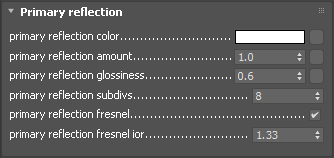
primary reflection color – Specifies the color for the primary reflections.
primary reflection amount – Specifies the relative contribution of the primary reflection layer to the material.
primary reflection glossiness – Specifies the glossiness value for the primary reflection.
primary reflection subdivs – Determines the number of samples used for computing glossy reflections from the primary reflection layer. Note that this parameter is available for changing only when Use local subdivs is enabled in the Global DMC Settings.
primary reflection fresnel – When enabled, a Fresnel term will be applied to the strength of the reflection.
primary reflection fresnel IOR – Specifies the IOR value used to compute reflection strength if Primary reflection fresnel is enabled.
Secondary Reflection Rollout
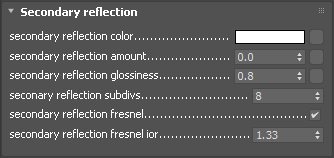
secondary reflection color – Specifies the color for the secondary reflections.
secondary reflection amount – Specifies the relative contribution of the secondary reflection layer to the material.
secondary reflection glossiness – Specifies the glossiness value for the secondary reflection.
secondary reflection subdivs – Determines the number of samples used for computing glossy reflections from the secondary reflection layer. Note that this parameter is available for changing only when Use local subdivs is enabled in the Global DMC Settings.
secondary reflection fresnel – When enabled, a Fresnel term will be applied to the strength of the reflection.
secondary reflection fresnel IOR – Specifies the IOR value used to compute reflection strength if Secondary reflection fresnel is enabled.
Trace Scattering Options Rollout

scatter gi – When enabled, GI is taken into account when calculating multiple scattering. Otherwise, GI is approximated as if the surface is diffuse. Enabling this option leads to more accurate results when using GI, but may slow down the rendering.
scatter textures – Controls whether the textures for the sub-surface scattering layers are taken into account when computing the scattering. Enabling this option may lead to more accurate results, but adds quite a bit of render time. For more information, see Raytraced Scatter Textures example below.
subdivs – Determines the number of samples used to compute multiple sub-surface scattering. Larger values decrease the noise, but take longer to compute. Note that this parameter is available for changing only when Use local subdivs is enabled in the Global DMC Settings.
VRaySkinMtl is now always rendered using the Raytraced multiple scattering algorithm. Its Prepass-based and Object-based modes are depricated.
Example: Raytraced Scatter Textures
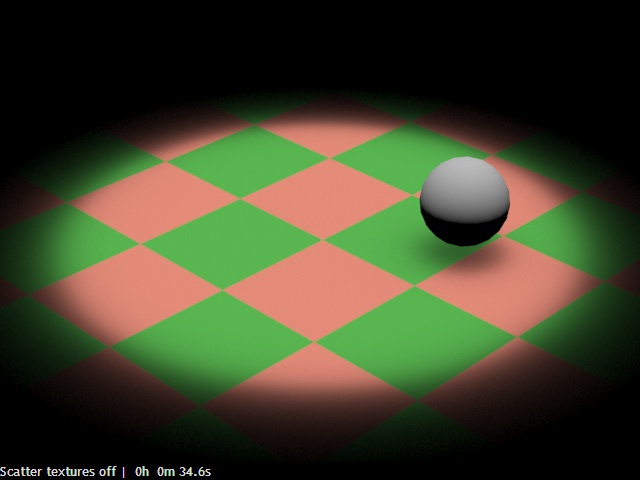 scatter textures is disabled, only the lighting on the surface is scattered.
scatter textures is disabled, only the lighting on the surface is scattered.
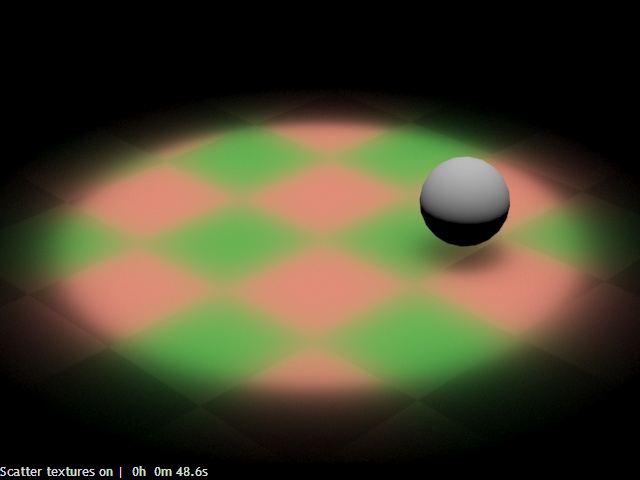 scatter textures is enabled. The textures are also included when computing the scattering, but the render time is increased.
scatter textures is enabled. The textures are also included when computing the scattering, but the render time is increased.
Options Rollout

trace reflections – Enables tracing of reflections from the primary and secondary reflection layers. When disabled, only highlights are computed. This can be used to speed up the shader calculations when reflections do not contribute significantly to the shader's appearance.
reflection max depth – Specifies the maximum reflection depth for the primary and secondary reflection layers.
reflection cutoff – Allows the user to skip the calculation of very dim reflections the contribution of which is below the cutoff value.